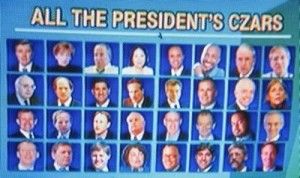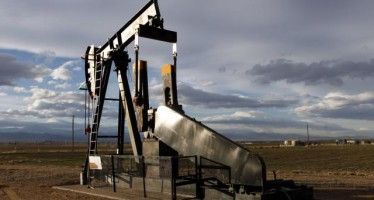Green Bank Czar could oversee new state bureaucracy

 In American political parlance, a “czar” is a government official put in charge of a project. For example, the head of the federal Drug Enforcement, currently Michele M. Leonhart, commonly is dubbed the “drug czar.”
In American political parlance, a “czar” is a government official put in charge of a project. For example, the head of the federal Drug Enforcement, currently Michele M. Leonhart, commonly is dubbed the “drug czar.”
Now state Sen. Kevin de Leon, D-Los Angeles, is proposing to establish what in our state could be called a Green Bank Czar. This still is in the early stages, but is important to watch, especially because he is slated to become the next state Senate president pro tem.
He is advancing Senate Bill 1121, the California Green Bank Act. It will be heard by the state Senate Rules Committee, chaired by current Senate President pro Tem Darrell Steinberg, sometime before March 22.
SB 1121 reads:
“This bill would state the intent of the Legislature to enact legislation that would establish the California Green Bank to coordinate, align, and enhance the state’s efforts to provide energy finance programs for advanced energy technologies and projects throughout the state.”
Note the word “intent.” If this bill passes, a second bill would be needed to provide the exact details of what the Green Bank would do. But the structure of the new state bureaucracy would be roughly what is called for in SB 1121:
“[W]ould establish a board of directors for the California Green Bank to be composed of appointees by the Governor, the Legislature, the Treasurer, the Department of Finance, the California Public Utilities Commission, the California Energy Commission, and the California Air Resources Board, who possess expertise in financing and green investments.”
The California Green Bank would be led by:
“[T]he position of an executive director to manage and conduct the business of the California Green Bank, subject to the direction of its board.”
Although not called that directly, the executive director would be the Green Bank Czar.
Green Bank functions
The Green Bank bureaucracy’s functions would be quite extensive over the state economy and would include:
“(1) Reducing rates and decreasing costs for California ratepayers while expanding the accessibility and affordability of clean energy for all Californians.
“(2) Increasing private investment in clean energy projects that currently are not able to obtain financing in traditional capital markets at a reasonable cost by providing a variety of financial tools to stimulate private investment.
“(3) Achieving California’s environmental and economic objectives by reducing greenhouse gas emissions and increasing investments in disadvantaged communities.
“(4) Facilitating efficient, low-cost private financing markets for clean energy projects.
“(5) Supporting California’s unique position as a worldwide leader in clean energy innovation by helping to bring innovative technologies to market.”
Number (3), for example, would tie the Green Bank bureaucracy in with AB32, the Global Warming Solutions Act of 2006, which mandates reducing greenhouse-gas emissions in California to 1990 levels by 2020.
Any legislation implementing the Green Bank would have to spell out how it would interface with the California Air Resources Board, which under AB32 is implementing current greenhouse-gas reduction efforts.
Existing Green Bank
However, California already has a Green Bank established in the State Treasurer’s Office. Treasurer Bill Locker’s website explains:
“The State Treasurer’s Office does its part by serving as California’s Green Bank. The office invests a portion of funds from the Pooled Money Investment Account (PMIA) in bonds that finance green projects throughout the world and operates two authorities that finance and administer programs and projects that promote green jobs and green California industries, keep our air and water clean, and encourage conservation of natural resources and the use of alternative energy.
Some of the projects include:
- The California Alternative Energy and Advanced Transportation Financing Authority provides tax-exempt bond financing, sales tax exclusions and other financing mechanisms. Part of CAEATFA’s package of green financing was authorized under Assembly Bill X1-14. That’s a no-down-payment loan program repaid by property tax reassessments for renewable energy projects. CAEATFA has granted 48 businesses tax exclusions, among them Tesla Motors, Cal-Tech, Bloom Energy and First Solar.
- The California Pollution Control Financing Authority is a “conduit” that issues tax exempt bonds for waste recycling projects. In 2013, it issued 3,640 loans for $233,561,098.
- The California Industrial Development Financing Authority Commission provides tax-exempt bond financing under a joint powers arrangement with local communities to help businesses finance capital expenditures such as land, construction, renovation and equipment.
- The California Statewide Communities Development Authority provides tax-exempt bond financing to non-profit businesses, for-profit and non-profit low-income housing developers including a Sustainable Energy Bond Program and Property Assessed Clean Energy Program.
- When Gov. Jerry Brown eliminated 625 local redevelopment agencies in 2011, redevelopment in many cases transformed into green energy programs at the state level.
California’s new Green Machine politics
In 2009, President Barack Obama and created 38 executive branch “czars.” The most high profile czar was Van Jones, a “Special Advisor on Green Jobs.” Jones had previously made a name for himself by founding nonprofit agencies in California, such as “Green For All.” And he wrote a book, “The Green Collar Economy: How One Solution Can Fix Our Two Biggest Problems.”
In New York, machine politics was historically founded on boroughs and immigrant neighborhoods. In the middle of the last century, Robert Moses was the czar and “power broker.” In Chicago, machine politics was based around wards and Mayor Richard Daley.
In California, a new Green Machine politics is emerging, centered around “joint powers authorities,” regional “Strategic Action Committees” between state and local government and green “Watershed Groups” that would usurp local home rule.
If the new Green Bank Czar position is created, it would maintain immense influence over all these projects.
A century ago progressive politics came into power in California to banish the influence of the political machine of the Southern Pacific Railroad over the Legislature.
Ironically, today progressive politics seems to be establishing — perhaps even without conscious knowledge — a new machine politics within the Legislature based around green economies and industries. If SB1121 passes, and further legislation enacts what it calls for, there would be a Green Bank Czar who could oversee it all.
Related Articles
Environmentalists use Porter Ranch disaster to target CA fracking
The California Public Utilities Commission is considering closing the massive 3,600-acre natural gas storage location in the Porter Ranch area of Los
Nevada Wins Tahoe Dispute
Gov. Jerry Brown signed into law Saturday legislation that renews and alters the Lake Tahoe development pact between California and
Bridge Tax Fails; Local Tax Passes
JUNE 13, 2011 By KATY GRIMES In the California Senate Friday, after a week of budget talks and hearings, the



